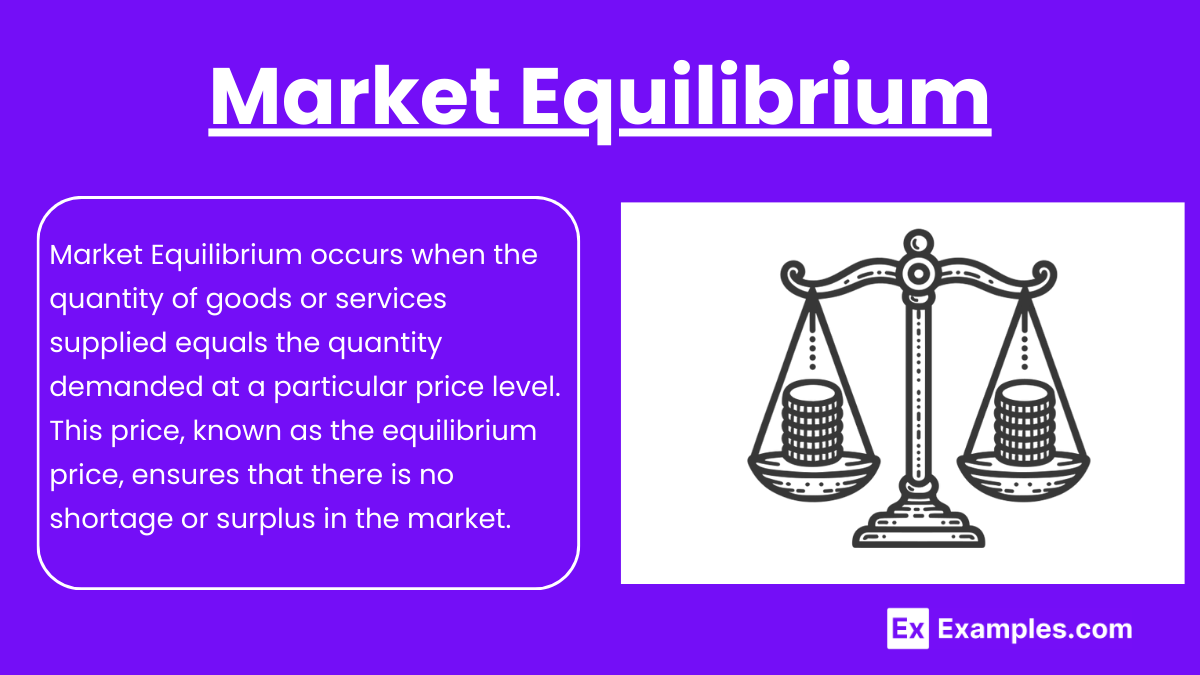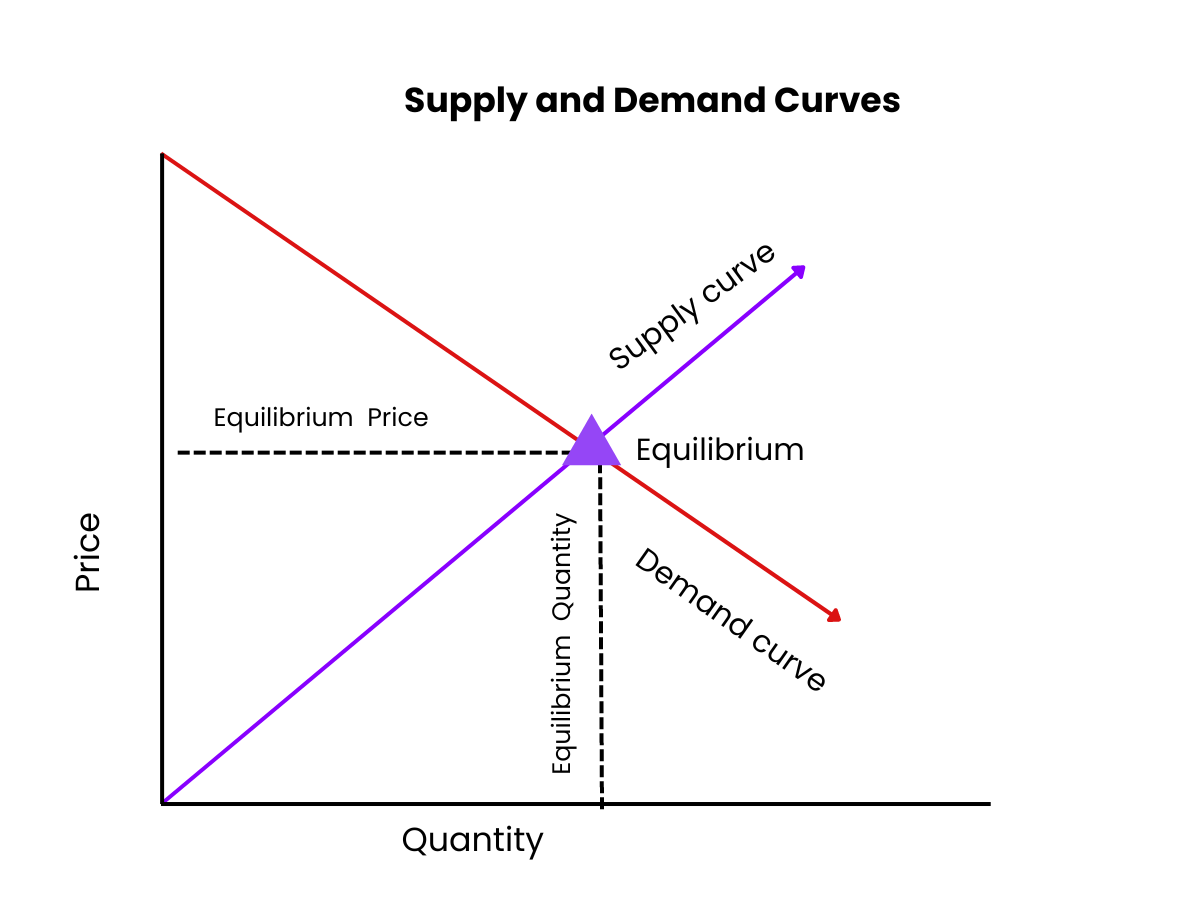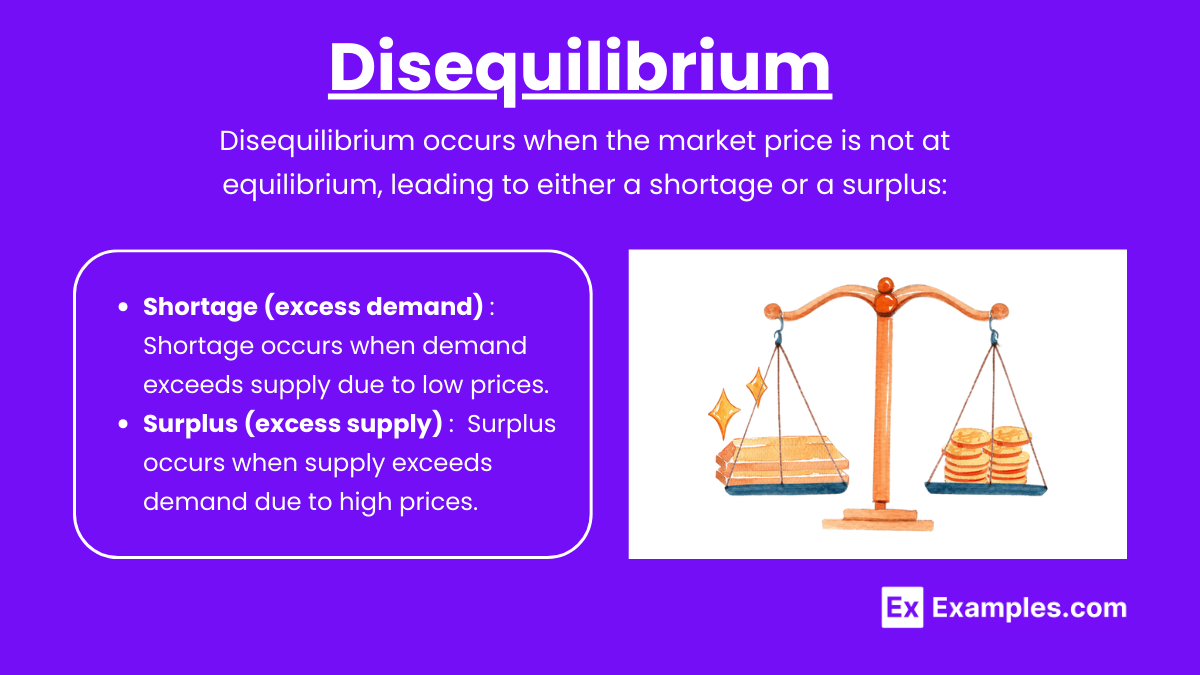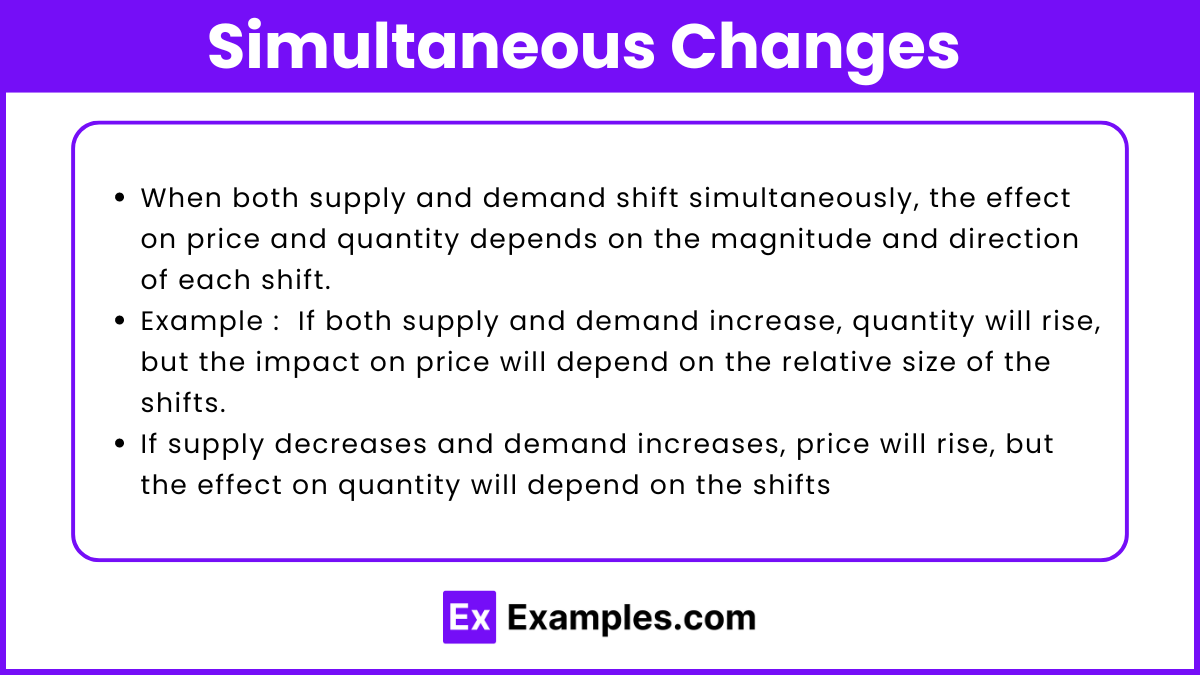In AP Microeconomics, understanding Market Equilibrium, Disequilibrium, and Changes in Equilibrium is essential for analyzing how markets function. Market equilibrium occurs when the quantity demanded equals the quantity supplied at a specific price, resulting in no excess supply or demand. Disequilibrium arises when prices deviate from equilibrium, causing either a surplus or a shortage. Changes in equilibrium occur when shifts in supply or demand alter the balance, influencing both price and quantity. These concepts are critical for evaluating how markets respond to various economic forces.
Learning Objectives
In studying “Market Equilibrium, Disequilibrium, and Changes in Equilibrium” for AP Microeconomics, you should learn how to identify and analyze the conditions that establish market equilibrium, including the interaction of supply and demand curves. Understand the effects of price ceilings, price floors, and other factors that cause disequilibrium, leading to shortages or surpluses. You should also master the analysis of shifts in supply and demand, how they affect equilibrium price and quantity, and how external factors influence the market’s self-correcting mechanisms to restore equilibrium.
Market Equilibrium

Market Equilibrium occurs when the quantity of goods or services supplied equals the quantity demanded at a particular price level. This price, known as the equilibrium price, ensures that there is no shortage or surplus in the market. In a perfectly competitive market, equilibrium ensures efficient resource allocation, where both consumers and producers are satisfied.
Supply and Demand Curves

- The demand curve slopes downward, indicating that as prices decrease, consumers demand more of a good.
- The supply curve slopes upward, showing that as prices increase, producers are willing to supply more of a good.
At the intersection of the supply and demand curves, the equilibrium price (P*) and equilibrium quantity (Q*) are determined.
Disequilibrium

Disequilibrium occurs when the market price is not at equilibrium, leading to either a shortage or a surplus:
- Shortage (excess demand): This occurs when the price is set below the equilibrium price, resulting in higher demand but lower supply.
- Surplus (excess supply): This occurs when the price is above the equilibrium price, leading to more supply but less demand.
In both cases, market forces will naturally push the price toward equilibrium, as producers adjust supply or prices, and consumers adjust their demand in response.
Shifts in Supply and Demand and Changes in Equilibrium
- When demand increases, the demand curve shifts to the right, raising the equilibrium price and quantity.
- When demand decreases, the curve shifts left, lowering equilibrium price and quantity.
- Similarly, increases in supply shift the supply curve right, lowering the price and raising the quantity.
- Decreases in supply shift the supply curve left, raising the price and reducing the quantity.
Simultaneous Changes

When both supply and demand shift simultaneously, the effect on price and quantity depends on the magnitude and direction of each shift. For example:
- If both supply and demand increase, quantity will rise, but the impact on price will depend on the relative size of the shifts.
- If supply decreases and demand increases, price will rise, but the effect on quantity will depend on the shifts.
Examples
Example 1. Price Ceiling on Rent
In a city where rent prices are regulated by a price ceiling (below market equilibrium), a disequilibrium occurs, creating a shortage. At this lower price, more people demand rental units than landlords are willing to supply. Over time, the market might react by landlords decreasing the quality of housing or converting rental units into other types of real estate. This results in persistent disequilibrium unless the price ceiling is lifted to allow the market to reach its natural equilibrium.
Example 2. Technological Advancements in Production
When a new technology reduces the cost of production for smartphones, the supply curve shifts to the right, increasing supply. At the initial equilibrium price, there is now a surplus, as more smartphones are produced than are demanded at that price. To restore equilibrium, prices decrease, encouraging consumers to buy more smartphones and allowing the market to settle at a new equilibrium with a higher quantity and a lower price.
Example 3. Increase in Demand for Electric Cars
As consumer preferences shift toward environmentally friendly options, the demand for electric cars increases. This demand shift moves the demand curve to the right. At the original equilibrium price, there is now a shortage of electric cars as demand exceeds supply. Over time, manufacturers raise prices and expand production, moving the market toward a new equilibrium with higher prices and a greater quantity of electric cars sold.
Example 4. Government Subsidies for Agricultural Products
When the government provides subsidies to farmers, the cost of producing agricultural products like wheat decreases, shifting the supply curve to the right. This increase in supply, without an immediate change in demand, results in a surplus at the original equilibrium price. Over time, prices fall, and the new equilibrium is established at a lower price but with a higher quantity of wheat being sold, benefiting both producers and consumers.
Example 5. Tax on Sugary Beverages
If the government imposes a tax on sugary beverages, the cost of production increases, causing the supply curve to shift left. At the original equilibrium price, this leads to a shortage, as fewer sugary drinks are supplied. In response, producers raise prices, and consumers buy fewer sugary drinks, resulting in a new equilibrium with a higher price and lower quantity consumed. This change aims to reduce the consumption of unhealthy products while moving the market to a new equilibrium point.
Multiple Choice Questions
Question 1
If a market is in disequilibrium and a surplus exists, which of the following is most likely to happen?
A) Prices will rise to eliminate the surplus.
B) Prices will fall to eliminate the surplus.
C) The supply curve will shift to the right to eliminate the surplus.
D) The demand curve will shift to the left to eliminate the surplus.
Correct Answer: B
Explanation: A surplus occurs when the quantity supplied exceeds the quantity demanded, typically because the price is set too high. To eliminate the surplus, sellers will lower prices to make the product more attractive to buyers, leading to an increase in quantity demanded and a reduction in quantity supplied, moving the market back toward equilibrium.
Question 2
Which of the following will most likely happen if there is an increase in demand and no change in supply?
A) Both the equilibrium price and quantity will decrease.
B) Both the equilibrium price and quantity will increase.
C) The equilibrium price will increase, but the equilibrium quantity will decrease.
D) The equilibrium price will decrease, but the equilibrium quantity will increase.
Correct Answer: B
Explanation: When demand increases (shift to the right of the demand curve) without a corresponding change in supply, the new equilibrium point will be at a higher price and higher quantity. The increased demand puts upward pressure on prices, and as more consumers want the product, the quantity exchanged in the market also rises.
Question 3
If the price of a product is set below the equilibrium price, which of the following is the likely result?
A) The supply curve will shift to the left.
B) There will be a surplus in the market.
C) The demand curve will shift to the right.
D) There will be a shortage in the market.
Correct Answer: D
Explanation: When the price is set below the equilibrium price, there is excess demand (shortage) because consumers want to purchase more at the lower price, but producers are not willing to supply enough at that price. This results in a quantity demanded that exceeds quantity supplied, creating a shortage in the market. Eventually, this shortage puts upward pressure on the price, pushing it toward equilibrium.


